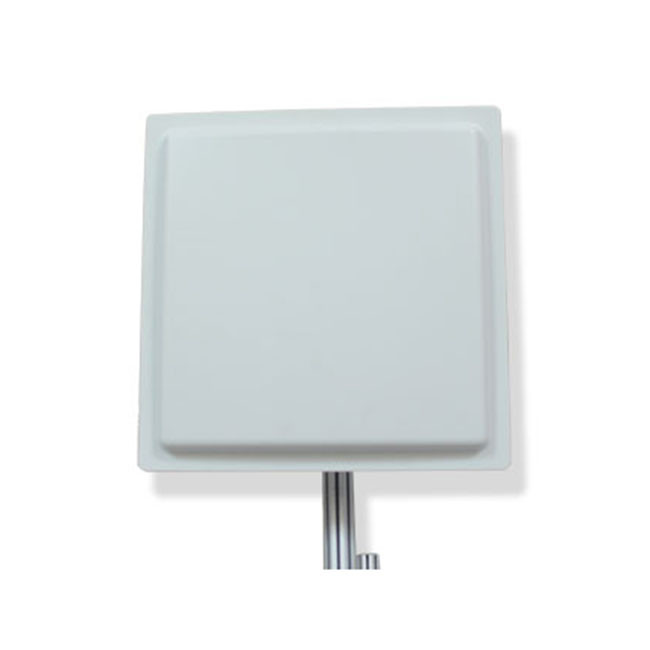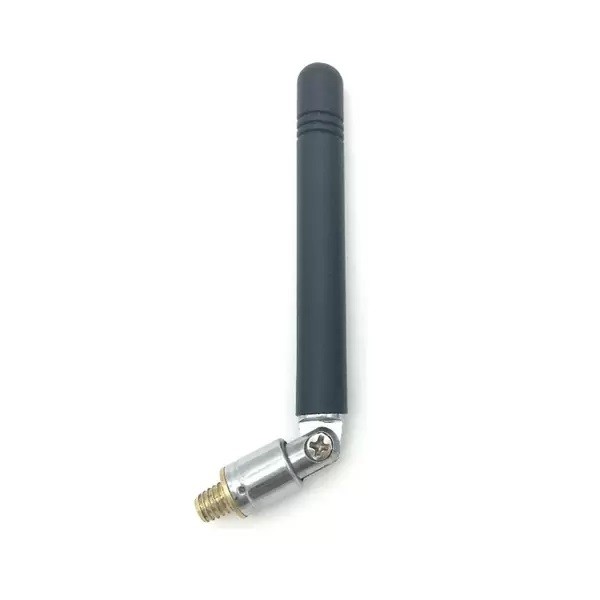In today's world, antennas play a crucial role in enabling various communication systems. Two types of antennas that stand out due to their widespread use in diverse industries are RFID antenna and VHF/UHF antenna. While RFID antennas are mainly used for wireless tracking and identification, VHF/UHF antennas serve as the backbone for communication in a variety of radio frequency applications.
This article delves into the functions, types, and benefits of RFID antenna and VHF/UHF antenna, helping you understand their unique roles in modern technology.
1. What is an RFID Antenna?
1.1. Definition and Function
An RFID antenna is a critical component of a Radio Frequency Identification (RFID) system. RFID technology is used to track and identify objects wirelessly by using electromagnetic fields. The RFID antenna emits or receives signals from an RFID tag, which is usually attached to an item or asset. This makes it possible to remotely monitor and manage inventory, assets, or even animals and people.
902-928MHz RFID Antenna Gain 12dBi with N Female Connector XMR-WX01
1.2. How RFID Antennas Work
RFID antennas work by creating an electromagnetic field that powers the RFID tag when it comes into range. The RFID tag then responds with stored information, which the antenna receives and transmits to a connected RFID reader. The RFID system processes the data for tracking, identification, and management purposes.
1.3. Types of RFID Antennas
RFID antennas come in various designs, each optimized for different uses. Here are some common types:
- Linear Polarized Antennas: These antennas are used for short-range applications and have a simple design.
- Circular Polarized Antennas: These antennas are ideal for long-range applications, as they can capture the signal regardless of the tag’s orientation.
- Patch Antennas: These are compact and offer high directional sensitivity, suitable for applications where space is limited.
1.4. Benefits of RFID Antennas
- Efficiency in Asset Tracking: RFID antennas enable quick and accurate tracking of assets, making them essential in industries like logistics, retail, and healthcare.
- Inventory Management: With RFID, businesses can automate inventory processes, reducing errors and time spent manually scanning barcodes.
- Contactless Data Capture: RFID systems allow for contactless reading and writing of data, enhancing speed and reducing physical wear and tear.
2. What is a VHF/UHF Antenna?
2.1. Understanding VHF and UHF Frequencies
VHF (Very High Frequency) and UHF (Ultra High Frequency) are two categories of radio frequency ranges, each with different properties and uses. VHF covers frequencies from 30 MHz to 300 MHz, while UHF spans from 300 MHz to 3 GHz. These frequency ranges are commonly used in communication systems like television broadcasting, emergency services, and satellite communications.
2.2. VHF/UHF Antenna Applications
VHF and UHF antennas are used in a wide variety of applications, including:
- Broadcasting: Television and radio stations use VHF and UHF antennas to transmit signals to receivers.
- Satellite Communication: UHF antennas are widely used for communication with satellites in space.
- Emergency Services: Many police, fire, and ambulance services use VHF/UHF radios for communication.
Amateur Radio: VHF/UHF bands are popular among amateur radio operators for both local and long-distance communications.
High Quality UHF Antenna Gain 3dBi VSWR≤1.5 with Screw Connector XMR-J039
2.3. Types of VHF/UHF Antennas
VHF/UHF antennas vary in design based on the specific needs of the application. Some common types include:
- Dipole Antennas: These are the simplest and most widely used types of antennas for both VHF and UHF communication.
- Yagi Antennas: A directional antenna with higher gain, often used for point-to-point communications, including television broadcasting.
- Helical Antennas: These are used for specialized communication systems, including satellite and space communications.
2.4. Benefits of VHF/UHF Antennas
- Long-Range Communication: VHF and UHF antennas provide clear, long-range signals, which is especially important for emergency and military communications.
- High Signal Penetration: VHF frequencies penetrate obstacles like buildings and trees better than higher frequencies, making them ideal for rural and urban communications.
- Versatile Applications: VHF/UHF antennas are used in everything from television broadcasting to public safety communications, making them incredibly versatile.
3. Comparing RFID Antennas with VHF/UHF Antennas
While RFID antennas and VHF/UHF antennas serve different functions, they share common ground in their reliance on radio frequency technology. Here’s how they compare:
4. Choosing the Right Antenna for Your Needs
4.1. When to Use RFID Antennas
RFID antennas are ideal when you need to automate tracking and management of physical assets. Businesses with large inventories, warehouses, or logistics operations benefit from the speed and accuracy of RFID systems. Whether you’re monitoring stock, securing valuable equipment, or tracking shipments, RFID antennas offer a highly efficient solution.
4.2. When to Use VHF/UHF Antennas
VHF/UHF antennas are crucial for applications where long-range communication is necessary. If you're involved in broadcasting, satellite communications, or emergency services, VHF/UHF antennas ensure that your signals travel long distances and penetrate physical obstacles, providing reliable and clear communication even in challenging environments.
5. Conclusion: The Future of RFID and VHF/UHF Antennas
Both RFID antenna and VHF/UHF antenna have carved their own niches in the world of wireless communication. As technology continues to evolve, the demand for efficient tracking systems and reliable communication will grow. RFID antennas are transforming industries like retail and logistics, while VHF/UHF antennas remain at the heart of broadcasting, emergency services, and satellite communications.
Choosing the right antenna for your specific needs ensures better performance, reliability, and efficiency in your communication or tracking systems. Understanding the core differences, benefits, and applications of these antennas will help you make informed decisions for your business or personal use.
FAQs (Frequently Asked Questions)
Q1: How do RFID antennas differ from traditional barcode systems? A1: RFID antennas allow for contactless, faster, and more accurate data transmission than barcode systems. Unlike barcodes, RFID tags do not need to be scanned manually, saving time and reducing errors.
Q2: Can VHF/UHF antennas be used for mobile communication? A2: Yes, VHF/UHF antennas are commonly used in mobile communication, including police radios, walkie-talkies, and emergency response systems.
Q3: Are RFID antennas suitable for all industries? A3: Yes, RFID antennas can be used across industries such as logistics, healthcare, retail, and agriculture for tracking and management purposes.
Q4: Can I use a VHF antenna for UHF frequencies? A4: While VHF and UHF frequencies require different antennas for optimal performance, some antennas are designed to support both frequency ranges.
Q5: What factors should I consider when choosing an RFID antenna? A5: Consider factors like range, orientation (linear or circular polarization), and compatibility with the RFID system you plan to use.
Q6: Can VHF/UHF antennas handle high data transfer rates? A6: VHF and UHF antennas are optimized for communication and broadcasting, but for very high data rates (such as in broadband communications), other specialized antennas may be required.
Related Articles
- A Comprehensive Guide to Coaxial RF Connectors2025-01-08
- Custom Antenna Design for High-Performance Wireless Systems2024-12-24
- The Different Types and Uses of RF Cable Assemblies2024-10-15
- Choosing the Best LoRa Antenna for Your IoT Applications2024-12-11
- 10 Key Factors to Consider When Choosing an RF Connector2024-12-05
Contact us with the RF and Microwave coaxial connectors, RF cable assemblies and Antennas.
Get A Quote

XIAOMA is a supplier specializing in the R&D and manufacturing of RF CONNECTORS,CABLE ASSEMBLY AND ANTENNAS products. It also provides one-stop radio frequency solutions for electronic equipment. XIAOMA Technology's products are widely used in consumer electronics, communication equipment and infrastructure, mobile terminals and automotive electronics.
Contact Info
Contact Person : Rick, Haifa
Wechat / WhatsApp: + 86 18651023520
Follow
Share
Download after filling out the form

